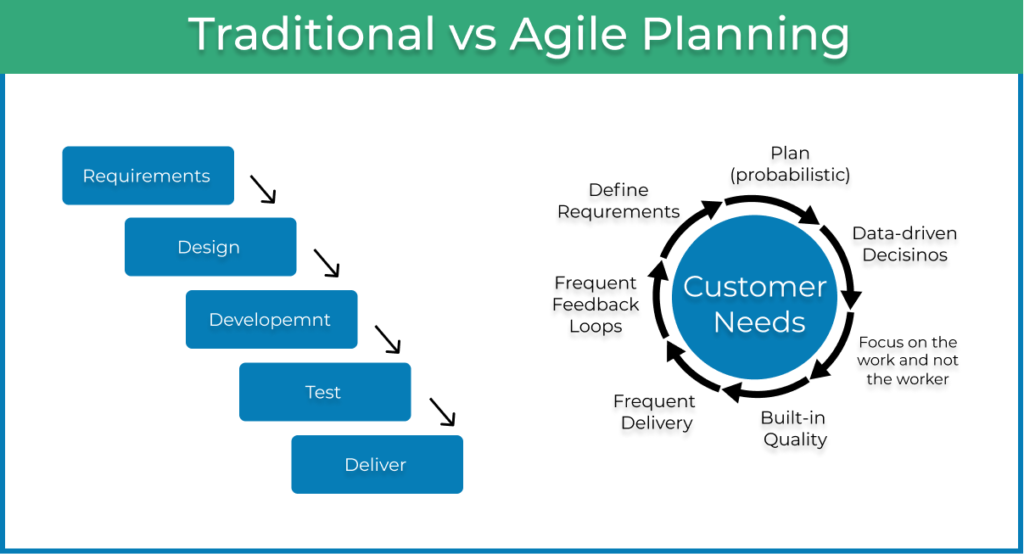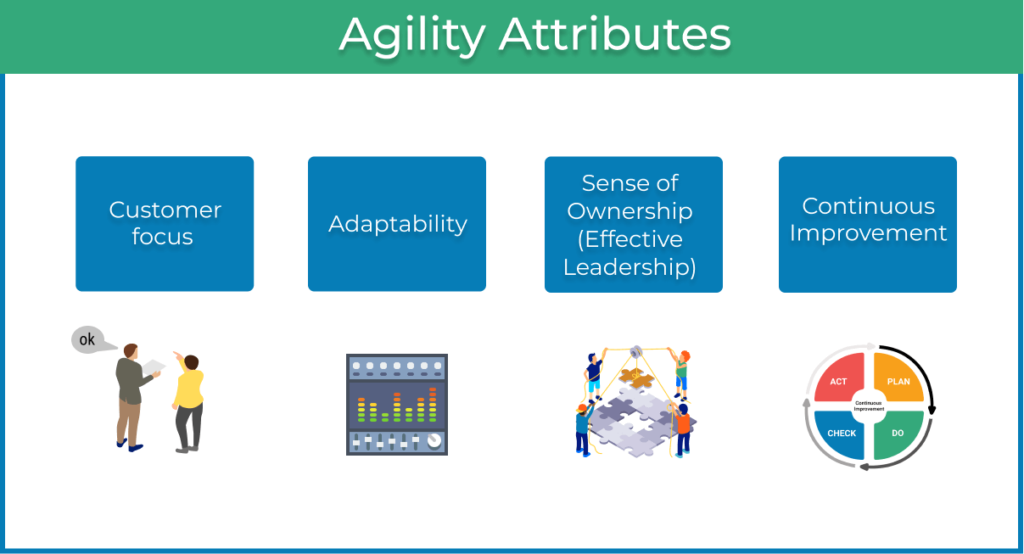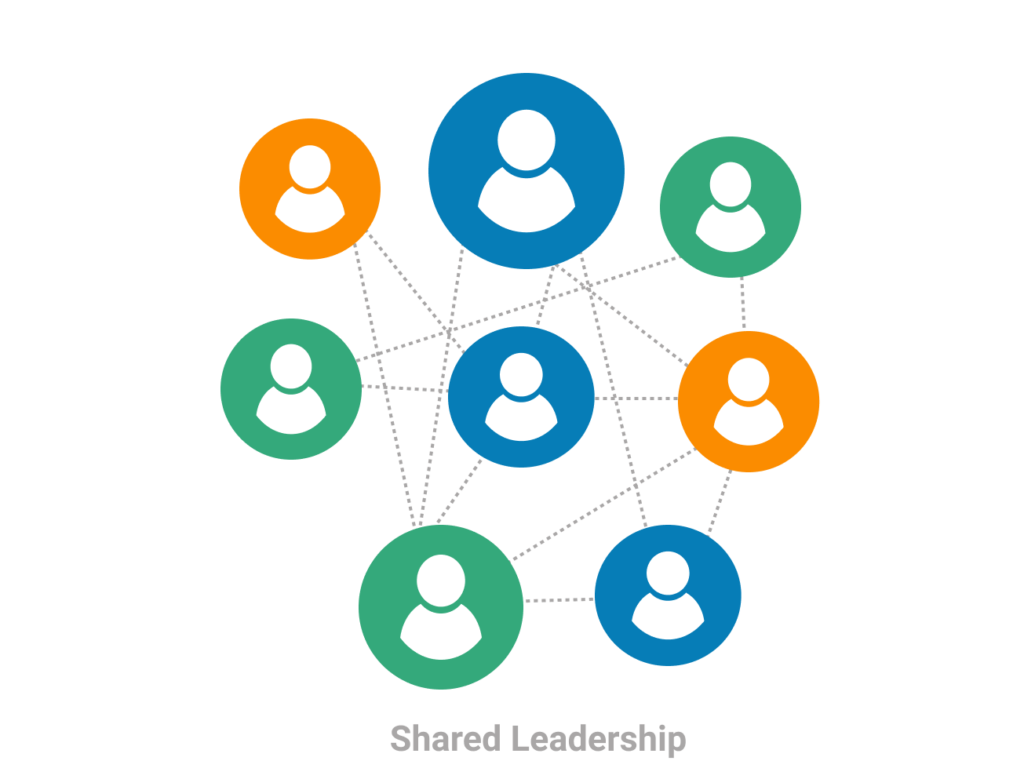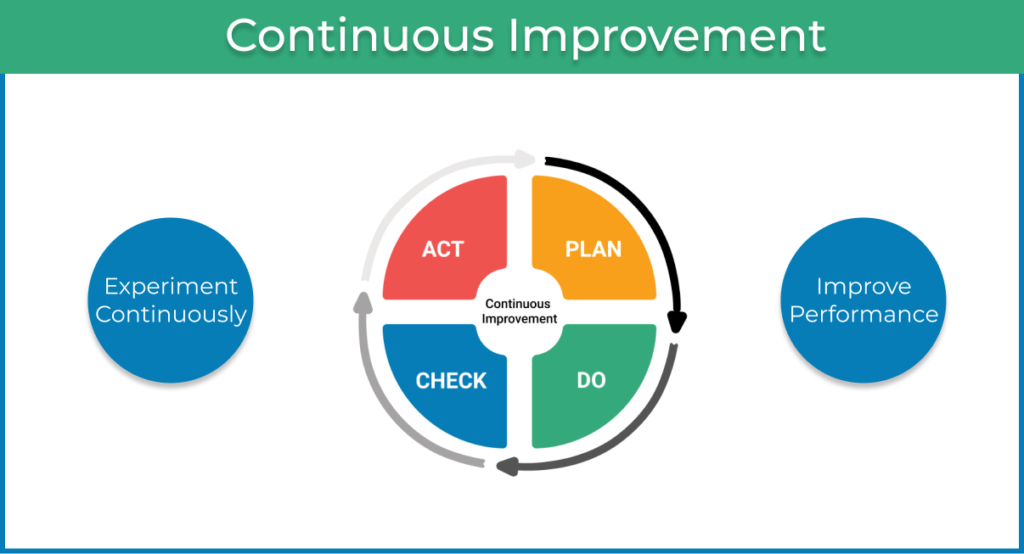Long gone are the days when Agile was just a nerdy topic among software developers. Having witnessed the methodology's positive effects on the quality and pace of engineering teams, a growing number of business leaders are also turning their attention to adopting Agile in their organizations.
Since it revolutionized the way software products are developed, the interest in agility has spread to industries ranging from retail to financial services, affecting the daily processes of millions of workers worldwide.
Being able to respond to change and adapting to seize emerging opportunities, which are two of the main pillars of the Agile mindset, makes a lot of sense in today's fast-paced business world and has been a subject of research by AgileSherpas in the past several years.
More recently, since the COVID-19 outbreak brought uncertainty to the business world and made the near future unpredictable, the need for business agility has skyrocketed. Everyone now needs to navigate effectively through the situation and adapt to the daily changes in the environment.
The following paragraphs explore the top 3 reasons why business leaders are adopting Agile in 2020.
A recently published report by AgileSherpas featuring more than 600 business owners, directors, and marketing managers serves as the base of this analysis. Of them, 42 percent are currently applying Agile within their organizations, while 95 percent of those working in traditional or ad hoc processes are planning to do so within a year.
Reason #1: To Improve Productivity
According to 58% of the interviewed leaders, the number one reason to adopt an Agile mindset and implement a mix of practices associated with it is the desire to improve productivity.
Productivity is severely affected by two major factors: how teams plan projects and how they execute them. Depending on the scope, most major business initiatives last from a quarter to over a year. In a traditional environment, leaders estimate how long the work is going to take and, draw a plan for execution based on the Waterfall methodology, then pass it down to the team to complete.
When the plan is laid out for a long period of time ahead, the team tends to waste a lot of time on unproductive activities at the beginning, being sure that there's plenty of time for focused execution ahead. A good example of wasted time during the early stages is attending long meetings with no clear agenda or allowing yourself too much slack time between tasks that does not get used optimally.
Since the deadline is months away, there is hardly any incentive to be productive at the beginning. This slow start results in a rush to catch up during the final stages, risking failure to deliver the project on time.
With Agile, things look very different. Planning becomes a lot more effective because it is focused on the short term, ranging from one to four weeks in advance. The process itself is different as well.

Unlike the traditional approach to planning, Agile involves the people closest to the work heavily. As a result, forecasting for complex Agile projects can become more accurate.
In addition, frequent short syncs are encouraged to communicate progress and prevent hidden impediments from taking the project off track. These are facilitated by the widely-adopted Agile practice of holding a 10 to 15-minute long on-food meeting (stand up meeting) each day, which aim to boost communication between everybody on the team.
By planning for the short term, the team aims to deliver value to the market faster, whether working in iterations or while processing assignments in a continuous workflow. These shorter time frames allow for more frequent delivery of value and nurture a high productivity environment.
Reason #2: To Manage Changing Priorities More Effectively
The second most frequently mentioned reason by 54% of the queried business owners and leaders for adopting Agile in 2020 is the need to manage changing priorities more effectively.
Responding to changes is difficult for companies of any scale. However, for large organizations, the challenge is even more significant due to their organizational complexity. Encumbered by siloed structures, bureaucratic processes, and complex legacy systems, big businesses can find it hard to respond quickly to changing requirements using traditional delivery approaches.
Agile allows business leaders to work in a more lean, collaborative, and iterative way, adapting to changing priorities so they can focus their efforts on areas where they will have the most impact.

By working in shorter cycles, teams can get feedback about their work early on and implement changes in a timely manner with less effort. In addition, by holding short, daily stand-up meetings, the team can discuss the impact of new requirements on the project schedule and communicate efficiently the best way to proceed.
Combining this with the visibility that Kanban boards provide, even on the portfolio level, makes reacting to changes easier. In a visual workflow, the team has full visibility into their to-do list (the backlog) and can provide input on how prioritization happens. Dedicated team members responsible for maintaining the backlog can bring new information to the team more easily to make sure that the current priorities reflect the reality of the situation at hand.
As a result, business teams can meet and even exceed changing customer expectations more frequently.
Reason #3: To Increase Innovation
The third most common reason for adopting Agile in organizations in 2020 is to increase innovation. This reason is cited by 49% of respondents. Even if technology is considered a primary influencer on innovation and process automation, people play a key role in how innovative an organization can be.
In reality, intellectual capital and proactive collaboration often make the difference between developing useful and innovative solutions or falling behind the competition.
The typical business stakeholders, like marketing and sales directors and their teams, play a major role in this effort because even the most exciting product or service won't be able to thrive without attracting the right users.
Without business agility, testing new hypotheses and experimenting with new ways of doing things is cumbersome. This gives an edge to more nimble competitors.
By applying Agile, business leaders give higher levels of autonomy to their teams, which can be particularly valuable for those doing creative work. The shared leadership model that an Agile organization encourages delegates more responsibility throughout the various layers of the hierarchy.

As a result, a larger number of people are empowered with the ability to make decisions and execute on them, to a certain degree, without needing supervisor approval. This gives them the freedom to experiment and find unique solutions for achieving the high-level goals set by top-level management.
As an added benefit, you can expect a rise in employee satisfaction. This result has been observed by 74% of the leaders who participate in or lead Agile teams.
In addition, by holding frequent retrospective meetings or service delivery reviews, Agile teams can analyze the results of any innovations that they are testing and identify ways to improve. During these meetings, you can reinforce positive outcomes, address issues, and discuss potential improvements, facilitating the necessary environment to achieve continuous improvement.

These natural, built-in checkpoints help teams think about the bigger picture of the project, something that can be lost if they are only focused on checking off tasks or deliverables.
Seeing the big picture is even more important in 2020 due to the concerns of an upcoming major global recession. In case you haven't yet put Agile to the test within your organization, the current situation should serve as a serious stimulus to follow in the footsteps of the successful companies that have.
If you have already done so, please share your motives for adopting the mindset and tell us which practices have brought you the most success.

Alex Novkov
Content Lead
Energetic and practical, passionate about social media, creative writing, heavy weights, and outdoor activities.



